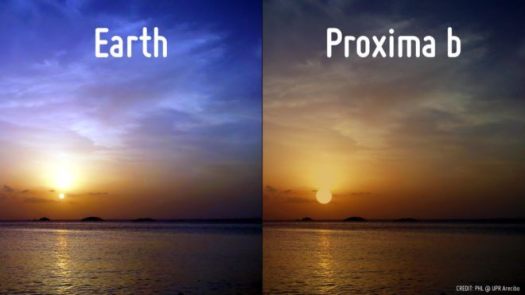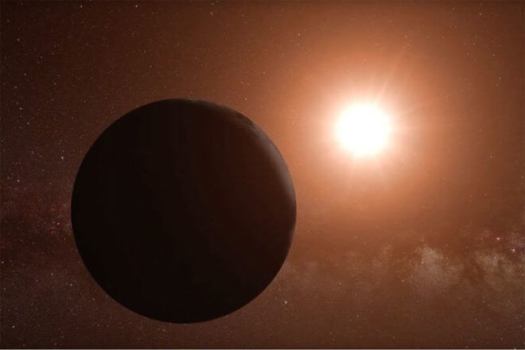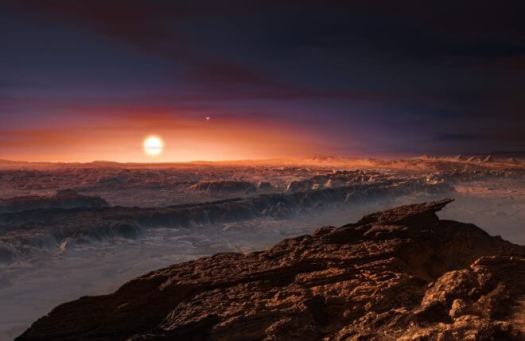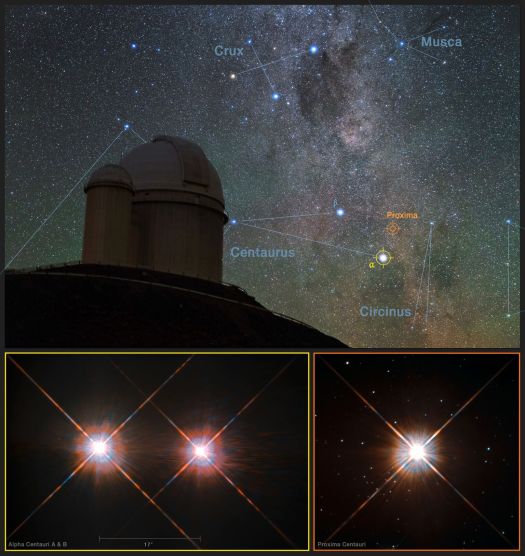
It is often discussed within the community of exoplanet scientists that a danger lies in the description of intriguing exoplanets as “Earth-like.”
Nothing discovered so far warrants the designation, which is pretty nebulous anyway. Size and the planet’s distance from a host star are usually what earn it the title “Earth-like,” with its inescapable expectation of inherent habitability. But residing in a habitable zone is just the beginning; factors ranging from the make-up of the planet’s host star to the presence and content of an atmosphere and whether it has a magnetic field can be equally important.
The recent announcement of the detection of a planet orbiting Proxima Centauri, the closest star to our own, set off another round of excitement about an “Earth-like” planet. It was generally not scientists who used that phrase — or if they did, it was in the context of certain “Earth-like” conditions. But the term nonetheless became a kind of shorthand for signalling a major discovery that just might some day even yield a finding of extraterrestrial life.
Consider, however, what is actually known about Proxima b:
- The planet, which has a minimum mass of 1.3 Earths and a maximum of many Earths, orbits a red dwarf star. These are the most common class of star in the galaxy, and they put out considerably less luminosity than a star like our sun — about one-tenth of one percent of the power.
- These less powerful red dwarf stars often have planets orbiting much closer to them than what’s found in solar systems like our own. Proxima b, for instance, circles the star in 11.3 days.
- A consequence of this proximity is that the planet is most likely tidally locked by the gravitational forces of the star — meaning that the planet does not rotate like Earth does but rather has a daytime and nighttime side like our moon. Some now argue that a tidally locked planet could theoretically be habitable, but the consensus seems to be that it is an obstacle to habitability rather than a benefit.
- The authors of the Proxima b paper make clear that evidence that the planet is rocky (as opposed to gaseous) is limited, and that’s why they label it as a “candidate terrestrial planet.”
So to describe Proxima b as “Earth-like” seems unfortunate to me, and prone to giving the public the misguided impression of a planet with blue skies, oceans, and fish swimming in them. Proxima b may have some very broadly defined characteristics that parallel Earth, but so do many other exoplanets that are definitely not habitable. And therein lies the really interesting part.
Before getting into that area, it should be made clear that the Proxima b detection was a game-changer, a discovery of historic proportions. It was and will be for a long time.
The detection, after all, provides the nearest opportunity possible for beginning to understand the extraordinary complexities of what makes a planet truly habitable — something that is far from understood today. And later, Proxima b may become a petri dish of sorts for identifying and measuring chemical signatures that could be a byproduct of some kind of life.
These are difficult tasks, to say the least, and will take an army of scientists years to come up with answers. But the good news is that the exoplanet field has already begun publishing papers on the dynamics and possible habitability of Proxima b, and they provide beginning insights into the issues, the excitement and the untold difficulties associated with this grandest of scientific chases.

Two Proxima papers that appeared soon after the August 24 announcement came from the University of Washington’s Virtual Planetary Laboratory. Supported by the NASA Astrobiology Institute since 2001, it is a leader in exoplanet research, modelling and habitability The team, directed by Victoria Meadows, received the Proxima detection paper before it was released because of longstanding relationships with the lead author, Guillem Anglada-Escude.
The two papers from the VPL team — one with Meadows in the lead and the other organized by University of Washington astronomer Rory Barnes — take broad, interdisciplinary approaches to the planet.
“Part one is what happened to this planet over time — what can we learn about its history, its evolution?” Meadows said. “Part two is what does the history mean for the current environment right now? We need photo-chemical models of what might be present, and then we have to look at what instruments we would need to detect what is decided we should be looking for.”

The Barnes paper is here and the Meadows paper is here.
The two take on different tasks, but really are one. Both start with an appreciative nod to what will quickly become the planet that scientists want to study, and then they go into the extraordinary complexity of the task ahead.
As Barnes and his team concluded, a major obstacle to habitability on Proxima b is the well documented evolution of red dwarf stars.
While their energy output is relatively low when mature, they go through early phases when they are much brighter and send out enormous solar flares that can double their brightness in a matter of minutes. Barnes said these intense phases could easily sterilize a close-in planet, leaving it incapable of evolving into a potentially living world even if, a billion years later, conditions for life were much more favorable.
“The planet is in a habitable zone and so could have had liquid water, but my biggest concern is the retention of that water,” Barnes said of Proxima b. “If the planet was formed in its current orbit, then it was baked enough for 100, 200 million years to form a runaway greenhouse effect.” A different dynamic may have resulted in the same results on Venus, which once was wet but now is super-hot and parched.
This leads to the next big question: Could Proxima b have been formed elsewhere, and was later pushed or pulled to its current location? Barnes said it is certainly possible that the planet spent its early years much further from Proxima Centauri, and he said that the (relatively) nearby presence of much larger star Alpha Centauri A and B certainly could have had dramatic effects on the locations and evolution of the planet.
For these reasons and many more, Barnes said, there is absolutely no way to conclude now that Proxima b either is, or is not, potentially habitable.

dwarf star Proxima Centauri, the closest star to the Solar System. The double star Alpha Centauri AB
also appears in the image to the upper-right of Proxima itself. Proxima b is a little more massive than
the Earth and orbits in the habitable zone around Proxima Centauri, where the temperature issuitable for liquid water to exist on its surface.
(ESO/M. Kornmesser)
The VPL group specializes in modeling possible planetary scenarios based on particular proposed condition. The team gets an idea of whether a planet might be habitable based on the history and potential current atmospheric and surface characteristics introduced into the model.
In the paper she led, Meadows and her team reported:
“We used coupled climate-photochemistry models to simulate several plausible states for the current environment of Proxima Cen b, for those various evolutionary scenarios. We find several post-runaway {greenhouse} states that are uninhabitable either due to extreme water loss or inclement surface temperatures. In particular, a dense Venus-like CO2 atmosphere will result in extremely high surface temperatures at Proxima Cen’s current semi-major axis.
“However, several evolutionary scenarios may lead to possibly habitable planetary environments, including O2-rich atmospheres that retain a remnant ocean after extreme water loss.”
So the conclusion of the VPL effort is that we really have no idea now whether Proxima b might be habitable, but the joined papers move the discussion significantly further by describing scenarios where the planet definitely would not be habitable, and some where it just might be.
These are essential guidepost for astronomers to know when actually observing Proxima b, which will surely become a target for many a telescope. To make an important discovery, it’s definitely useful to know what you’re looking for.
Meadows also looked into which telescopes have capacities to make the needed observations, and concluded that large ground-based telescopes have a role to play, though with current technology it will be a very challenging one. But given the possible results, she said, “I can’t image they wouldn’t make the upgrades happen as fast a possible.”
And then there’s the James Webb Space Telescope (JWST), due to launch in 2018. Because it observes in the infrared section of the spectrum, it is able to measure heat signatures with precision. And that opens some exciting possibilities.

(Y. Beletsky (LCO)/ESO/ESA/NASA/M. Zamani)
Meadows and her team laid them out, and so did Harvard astronomer Laura Kreidberg, in a paper for The Astrophysical Journal with Harvard-Smithsonian Center for Astrophysics theoretical physicist and cosmologist Abraham Loeb.
As Loeb explained in an email: “As the planet orbits around the star, we should see a changing fraction of its day side, similarly to the phases of the Earth’s moon. The changing color of the planet as it orbits the star provides evidence for the temperature contrast between its day and night sides.
“This contrast has an extreme value for bare rock, but is moderated by an atmosphere or an ocean that transfers heat across the planet’s surface. Our paper shows that JWST will be able to distinguish between these cases with high significance after observing the planet for a full orbital time of 11 days.”
In other words, the temperature difference between the planet’s day side and its night side will be larger than expected if there is no atmosphere., and lower than expected if there is.
Determining that there is an atmosphere present, Loeb said, would substantially increase the chances that Proxima b is, or once was, habitable. The first order would be to look for things like oxygen, water vapor, and methane, which could indicate habitable conditions if not active biological processes.
This is a very difficult task because it requires the ability to catch starlight as it bounces off or filters through the planet’s atmosphere. He said that while the JWST might be able to detect a few compounds including ozone, full atmospheric analysis will have to wait for future ground-based observatories like the European Extremely Large Telescope, which is expected to see first light in the mid-2020s. Ultimately, it will take a direct imaging space telescope like the one being proposed for a launch in the 2030s to answer many of the important questions.
So the process of getting to really know Proxima b, of learning more than its promising but less-than-revealing location and mass is about to begin.
It’s exciting for sure, and not because Proxima b is “Earth-like.” Rather, there’s the real possibility of finding a habitable planet that — except in some grand-scale structural ways — is really not so “Earth-like” at all.
